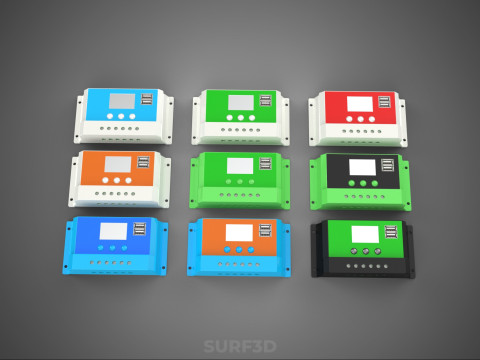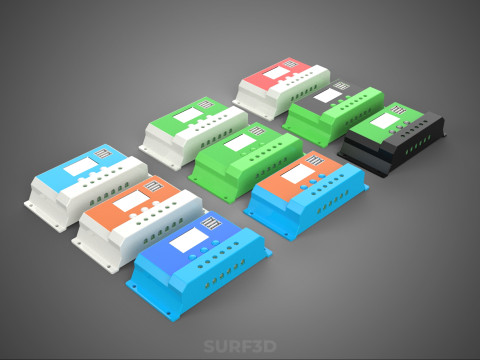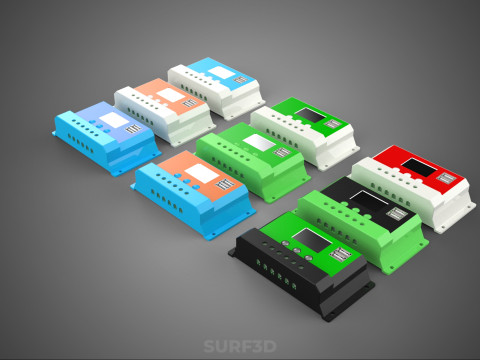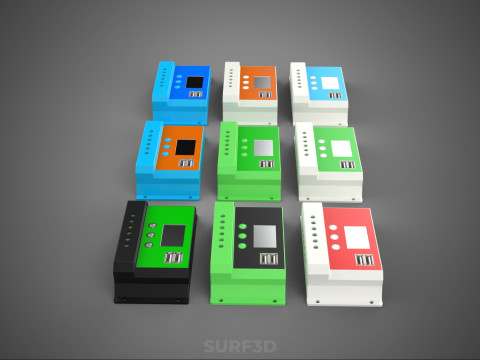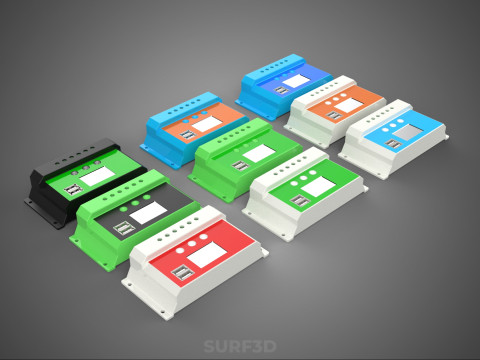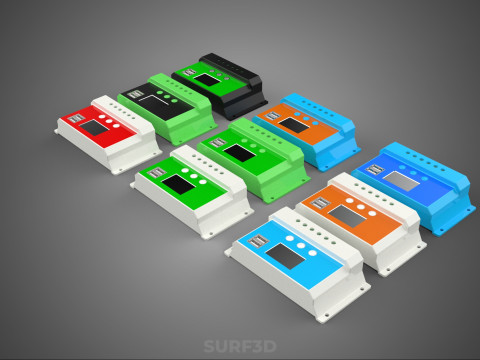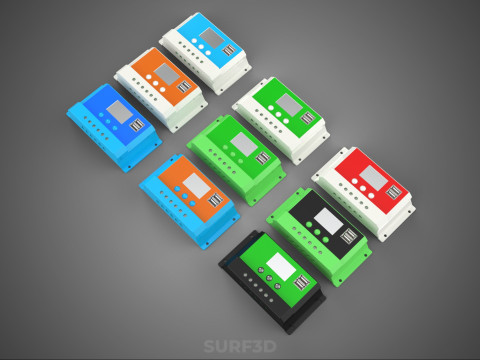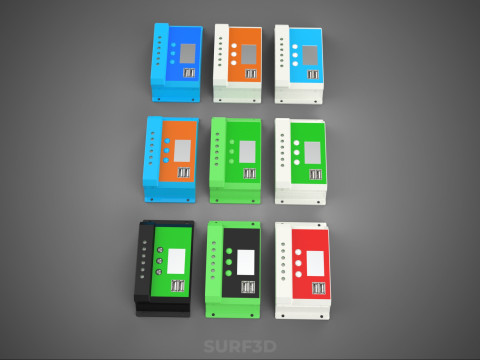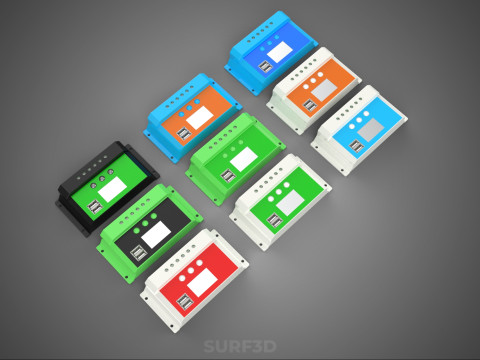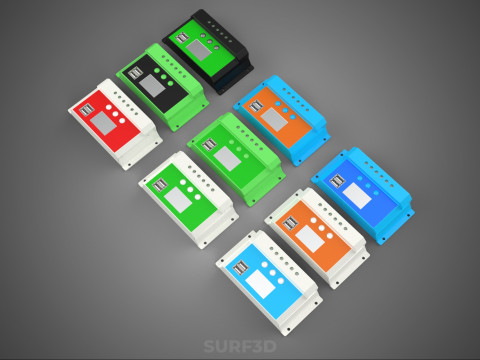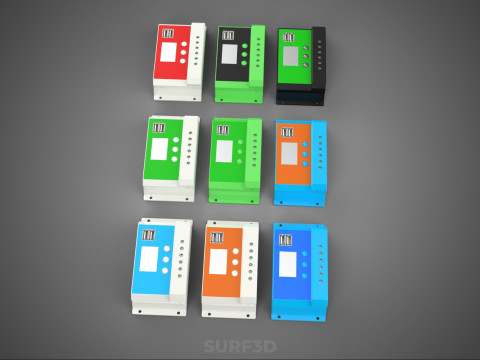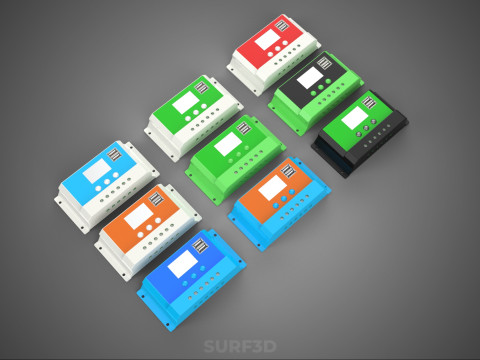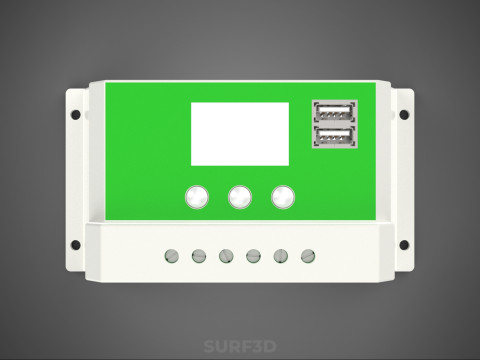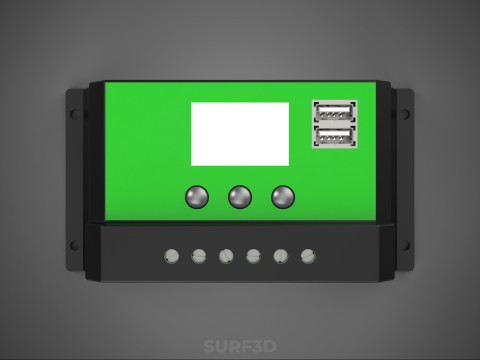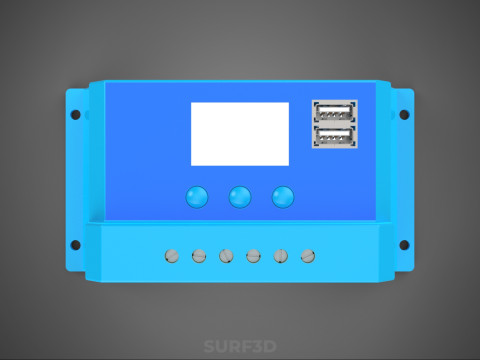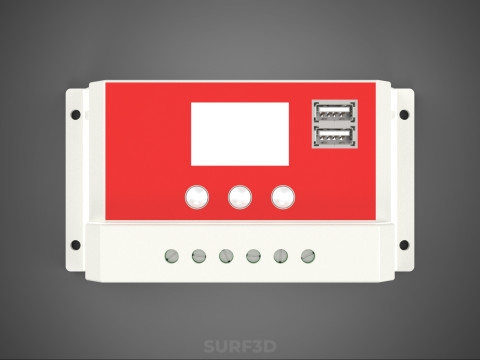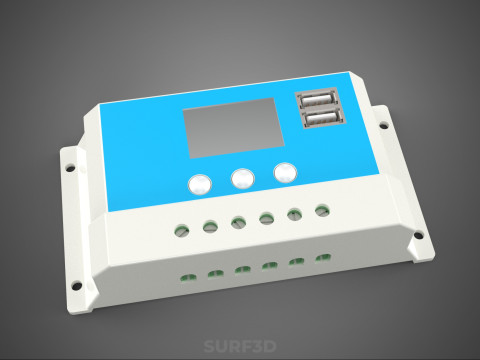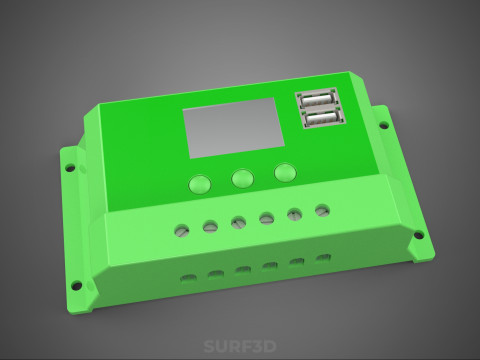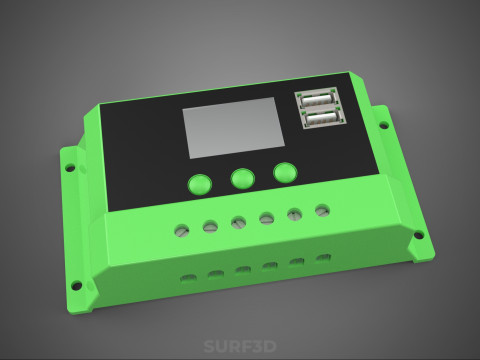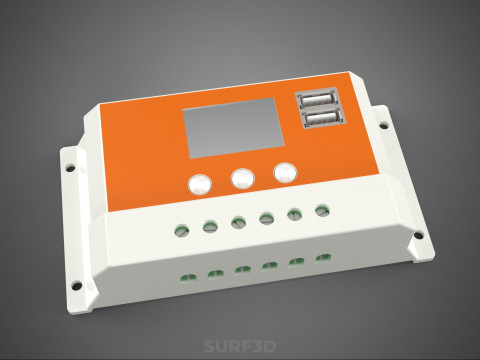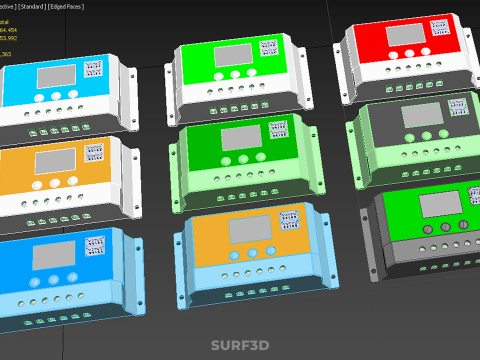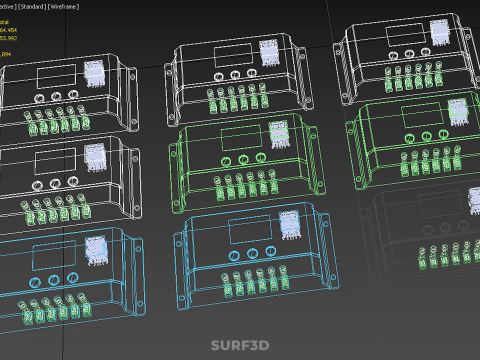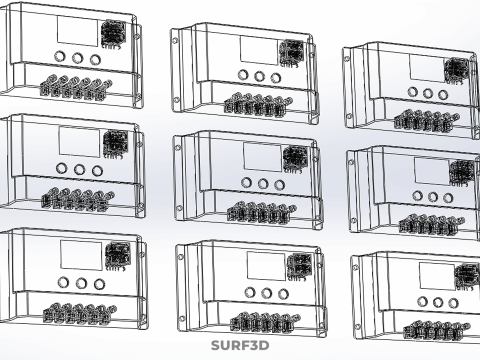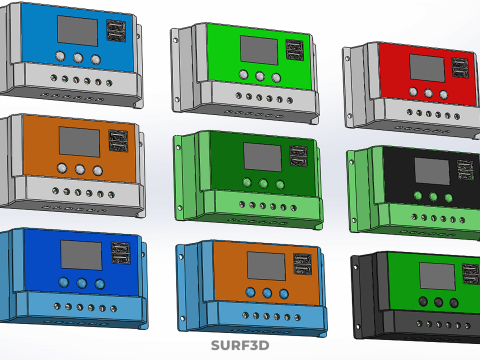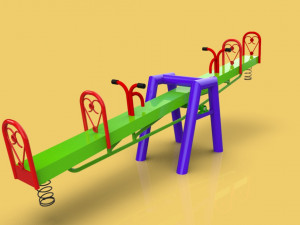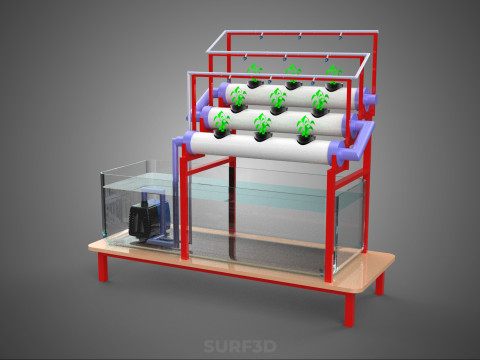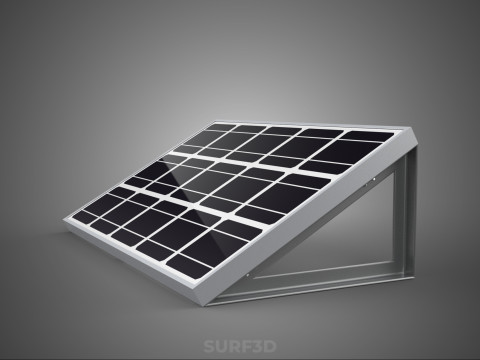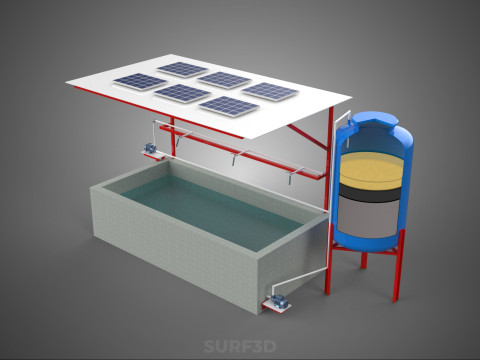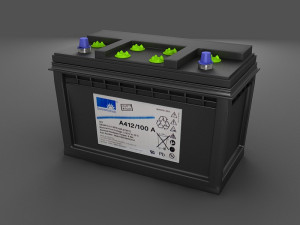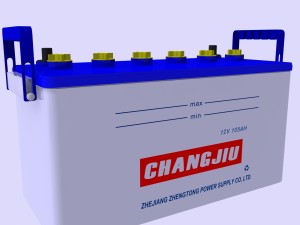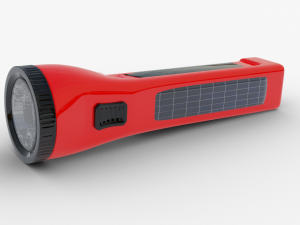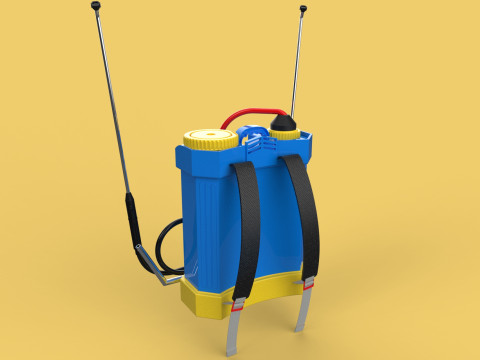MULTI COLOR SOLAR CELL PANEL CONTROLLER BATTERY CHARGE REGULATOR 3D Model
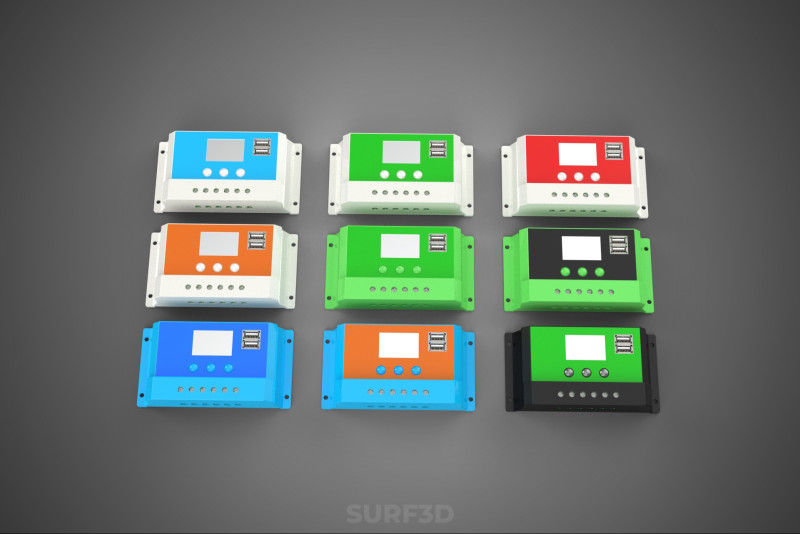
- Mogelijke formaten: Rhinoceros (.3dm) 9.35 MB3D Studio (.3ds) 1.63 MBBlender3D (.blend) 5.09 MBCollada (.dae) 3.58 MBAutoCAD (.dwg) 5.76 MBAutodesk FBX (.fbx) 8.15 MBGLB (.glb / .gltf) 1.95 MBIGES (.iges) 3.46 MBAutodesk 3DS MAX (.max) 14.58 MBWavefront OBJ (.obj) 3.91 MBACIS(.sat) 6.44 MBSketchUp (.skp) 1.36 MBSTEP (.step) 3.50 MBStereolithography (.stl) 3.93 MB
- Polygonen:364454
- Hoekpunten:353992
- Geanimeerd:No
- Texturen:No
- Gemanipuleerd:No
- Materialen:
- Low-poly:No
- Collectie:No
- UVW-toewijzing:No
- Plugins Gebruikt:No
- Afdruk Gereed:No
- 3D scan:No
- Volwassen:No
- PBR:No
- AI-training:No
- Geometrie:Poly NURBS
- Onverpakte UV's:Unknown
- Aantal keer bekeken:37
- Datum: 2025-08-28
- Item ID:595420
High-quality 3D assets at affordable prices — trusted by designers, engineers, and creators worldwide. Made with care to be versatile, accessible, and ready for your pipeline.
Included File Formats
This model is provided in 14 widely supported formats, ensuring maximum compatibility:
• - FBX (.fbx) – Standard format for most 3D software and pipelines
• - OBJ + MTL (.obj, .mtl) – Wavefront format, widely used and compatible
• - STL (.stl) – Exported mesh geometry; may be suitable for 3D printing with adjustments
• - STEP (.step, .stp) – CAD format using NURBS surfaces
• - IGES (.iges, .igs) – Common format for CAD/CAM and engineering workflows (NURBS)
• - SAT (.sat) – ACIS solid model format (NURBS)
• - DAE (.dae) – Collada format for 3D applications and animations
• - glTF (.glb) – Modern, lightweight format for web, AR, and real-time engines
• - 3DS (.3ds) – Legacy format with broad software support
• - 3ds Max (.max) – Provided for 3ds Max users
• - Blender (.blend) – Provided for Blender users
• - SketchUp (.skp) – Compatible with all SketchUp versions
• - AutoCAD (.dwg) – Suitable for technical and architectural workflows
• - Rhino (.3dm) – Provided for Rhino users
Model Info
• - All files are checked and tested for integrity and correct content
• - Geometry uses real-world scale; model resolution varies depending on the product (high or low poly)
• • - Scene setup and mesh structure may vary depending on model complexity
• - Rendered using Luxion KeyShot
• - Affordable price with professional detailing
Buy with confidence. Quality and compatibility guaranteed.
If you have any questions about the file formats, feel free to send us a message — we're happy to assist you!
Sincerely,
SURF3D
Trusted source for professional and affordable 3D models.
More Information About 3D Model :
A Multi-Color Solar Cell Panel Controller Battery Charge Regulator is a sophisticated electronic device integral to autonomous and hybrid photovoltaic (PV) power systems. Its primary function is to manage the flow of electrical energy from solar panels to a battery bank, ensuring optimal battery health, maximizing system efficiency, and enhancing user safety. The "Multi-Color" attribute typically refers to the advanced visual feedback mechanisms incorporated into the device's user interface, utilizing diverse color indicators or a multi-color display to convey operational status, charge levels, and diagnostic information intuitively.
**Core Functionality and Components:**
This device synergistically combines the roles of a solar charge controller and a battery charge regulator, performing several critical functions:
1. **Solar Panel Interface**: It receives unregulated direct current (DC) power generated by the solar cell panel. Depending on its design, the regulator may employ Maximum Power Point Tracking (MPPT) technology to dynamically adjust its input impedance, thereby extracting the maximum possible power from the solar array under varying irradiance and temperature conditions. Simpler, more cost-effective models may utilize Pulse Width Modulation (PWM) for charge regulation.
2. **Battery Management**: The regulator connects directly to the battery bank, where it meticulously oversees the charging and discharging cycles. It implements multi-stage charging algorithms (e.g., bulk, absorption, float) to ensure thorough and safe charging without causing damage to the battery. It proactively prevents overcharge by disconnecting or significantly reducing current from the solar array once the battery reaches full charge. Conversely, it prevents deep discharge by automatically disconnecting connected DC loads if the battery voltage falls below a critical threshold, thereby prolonging battery lifespan.
3. **Charge Regulation**: The fundamental principle involves continuous monitoring of battery voltage and current. When the battery voltage approaches a predetermined limit (e.g., absorption voltage), the regulator modulates the charging current. PWM controllers achieve this by rapidly switching the solar panel connection on and off, maintaining a safe average voltage. MPPT controllers actively convert the potentially higher voltage, lower current output from the solar panel into the lower voltage, higher current required for efficient battery charging, adapting to the panel's maximum power point.
4. **"Multi-Color" User Feedback**: This feature is a significant enhancement for user interaction and system diagnostics:
* **LED Indicators**: Many controllers incorporate multiple colored Light-Emitting Diodes (LEDs). For instance, a green LED might signify normal operation or a fully charged battery, a yellow LED could indicate active charging or a warning state (e.g., low battery), and a red LED typically signals a critical fault, over-discharge, or an emergency condition.
* **Multi-Color Displays**: More advanced units often feature an integrated Liquid Crystal Display (LCD) or a graphic display capable of rendering information in various colors. This enables a detailed visual representation of key parameters such as battery state-of-charge (SoC), input/output current and voltage, power generation, and specific error codes. Color-coding is frequently used to provide immediate status alerts (e.g., green for optimal, amber for caution, red for critical), significantly improving readability and diagnostic speed for the user.
5. **Load Control (Optional but Common)**: Many charge regulators include a controlled DC output terminal designed for direct connection of DC loads (e.g., LED lighting, small DC appliances). This feature allows the regulator to automatically disconnect these loads if the battery voltage drops too low, preventing deep discharge and further preserving battery integrity.
6. **Protection Features**: Comprehensive protection mechanisms are integral to ensure the safety and longevity of both the system and its users. These typically include:
* Overcharge and over-discharge protection for the battery.
* Reverse polarity protection for solar panels, battery, and load connections.
* Short-circuit protection for all connected components.
* Over-temperature protection for the controller unit.
* Lightning or surge protection for the overall system.
**Operating Principles:**
The operational core of the regulator hinges on its ability to continuously sense battery voltage. As the battery approaches its charging voltage set points, the controller initiates modulation of the charging current. PWM controllers achieve this by switching the connection to the solar panel on and off rapidly, maintaining the battery voltage within safe limits. MPPT controllers, conversely, utilize sophisticated algorithms to track the solar array's maximum power point, dynamically adjusting the electrical load presented to the panel to optimize power transfer to the battery, even under fluctuating environmental conditions. Once the battery reaches full charge, the controller typically transitions to a "float" stage, providing a minimal trickle charge to compensate for self-discharge, thereby maintaining the battery in a fully charged state without inducing overcharging.
**Applications and Significance:**
Multi-Color Solar Cell Panel Controller Battery Charge Regulators are indispensable in a diverse range of off-grid and hybrid solar power applications, including:
* Remote residential homes and cabins
* Recreational vehicles (RVs) and marine vessels
* Uninterrupted power supplies for telecommunications and remote monitoring equipment
* Stand-alone solar street lighting and signage systems
* Various backup power solutions
Their significance is paramount in ensuring the longevity and reliability of the battery bank, often the most expensive and critical component in a solar power system.
Als u een ander formaat nodig heeft, open dan alstublieft een nieuwe Support Ticket en vraag om een ander formaat. Wij kunnen uw 3D modelen van vorm veranderen naar: .stl, .c4d, .obj, .fbx, .ma/.mb, .3ds, .3dm, .dxf/.dwg, .max. .blend, .skp, .glb. We converteren geen 3D scènes en formaten zoals .step, .iges, .stp, .sldprt.!


 English
English Español
Español Deutsch
Deutsch 日本語
日本語 Polska
Polska Français
Français 中國
中國 한국의
한국의 Українська
Українська Italiano
Italiano Nederlands
Nederlands Türkçe
Türkçe Português
Português Bahasa Indonesia
Bahasa Indonesia Русский
Русский हिंदी
हिंदी